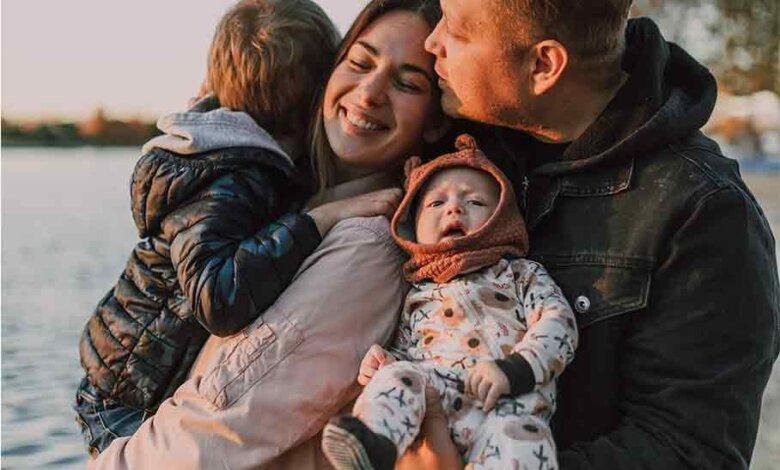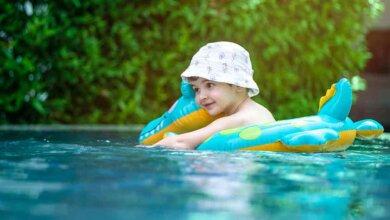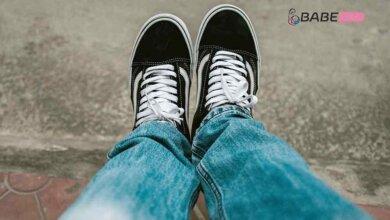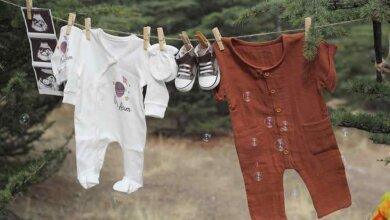The Ultimate Guide to Baby Coats: Choosing the Perfect Outerwear for Your Little Bundle of Joy

Introduction
When it comes to keeping our little ones warm and protected, baby coats play a vital role. Understanding the different types of baby coats available is crucial for finding the perfect outerwear. Let’s dive into the world of baby coats and explore the factors to consider before making a purchase.
Factors to Consider Before Buying a Baby Coat
Before investing in a baby coat, there are several factors to take into account:
- Weather suitability: It’s important to match the coat to the climate your baby will be exposed to. Consider the insulation level of the coat in relation to the weather conditions.
- Sizing and fit: Ensuring comfort and ease of movement is key. Make sure to choose a coat that allows your little one to move freely without any restrictions.
- Safety features: Functionality and childproofing should be prioritized. Look for features such as secure closures and non-toxic materials to ensure the coat is safe for your baby.
- Material considerations: Optimal fabrics for insulation and breathability should be chosen. Selecting coats made from high-quality materials can help regulate body temperature and keep your baby comfortable.
Types of Baby Coats
Let’s explore the different types of baby coats and their unique characteristics:
- Fleece Coats: These cozy and lightweight coats are perfect for mild climates. They provide just the right amount of warmth without overheating your little one.
- Puffer Coats: Made with great insulation, puffer coats are ideal for colder temperatures. They keep your baby snug and cozy, even during chilly winter days.
- Wool Coats: Known for their classic and warm appeal, wool coats are a popular choice for sophisticated looks. They provide excellent insulation and ensure your little one stays toasty during colder seasons.
- Raincoats: Perfect for wet weather, raincoats keep your baby dry and comfortable. Look for waterproof and breathable materials to protect your little one from rain showers.
- Snowsuits: For extreme cold and snowy conditions, snowsuits are the go-to option. They offer an all-in-one solution, providing insulation and protection from cold winds and snow.
Understanding Baby Coat Features
Here are some key features to consider when selecting a baby coat:
- Zipper vs. Button Closure: Both closure options have their pros and cons. Zippers offer convenience and quick dressing, while buttons provide a traditional and stylish touch. Choose according to your preferences and the situation.
- Detachable Hoods: Having a detachable hood gives you the flexibility to adjust to changing weather conditions. You can remove it on warmer days or attach it to provide extra protection from the elements.
- Cuffs and Mittens: Keep your little one’s hands warm by selecting coats with cuffs and mittens. These additional features provide protection from the cold and prevent heat from escaping.
- Reflective Strips: Enhance visibility and safety by choosing coats with reflective strips. These strips ensure your baby remains visible during low-light conditions, such as early mornings or evenings.
- Adjustable Waistbands: As babies grow quickly, choosing coats with adjustable waistbands allows for a customizable fit. This feature ensures your baby remains comfortable and allows room for growth.
Essential Baby Coat Accessories
To maximize warmth and comfort, consider adding these accessories to your baby’s coat ensemble:
- Booties and Socks: Keep tiny feet warm and cozy by providing the right footwear. Opt for soft booties or socks made from wool or thermal materials for added warmth.
- Hats and Beanies: Protect delicate heads from the cold and wind with hats and beanies. Look for ones that cover the ears to provide ultimate warmth.
- Scarves and Neck Warmers: Add extra layers for added warmth and protection by including scarves or neck warmers. These accessories help keep your baby’s neck and chest cozy during colder weather.
- Gloves and Mittens: Maintain comfort for little hands with gloves or mittens. Look for options with adjustable features to ensure a snug fit and proper insulation.
- Layering Basics: Achieve maximum warmth without compromising mobility by layering your baby’s clothing. This technique allows for easy adjustment based on the weather conditions.
Choosing the Right Size and Fit
To ensure your baby’s coat fits perfectly, consider the following:
- Understanding size charts and measurements: Take into account your baby’s specific measurements when referring to size charts. This will help you select the right size for a comfortable fit.
- Ensuring flexibility and mobility: Opt for coats that allow your baby to move freely. A slightly looser fit ensures easy mobility, making it easier for your little one to explore and play.
- Fit considerations for layering: If you plan to layer clothing underneath the coat, choose a size that accommodates the additional layers.
Safety Guidelines for Baby Coats
Safety is paramount when it comes to selecting and using baby coats. Keep the following guidelines in mind:
- Avoiding excessive bulk or overly long coats: Bulky and excessively long coats can pose safety risks, such as hindering movement or causing your baby to trip. Opt for coats that strike a balance between warmth and safety.
- Car seat safety: When using a car seat, be mindful of the thickness of your baby’s coat. Bulky coats can compromise the harness’s effectiveness. Consider using blankets or car seat covers for added warmth during car rides.
- Recognizing potential choking hazards: Avoid coats with small decorative elements, such as buttons or strings, which can be potential choking hazards. Prioritize coats with safe and child-friendly designs.
Cleaning and Maintenance Tips
To ensure your baby’s coat stays in good condition, follow these cleaning and maintenance tips:
- Washing instructions: Different baby coat materials require specific washing instructions. Follow the care labels and wash coats accordingly to maintain their quality and durability.
- Proper storage: Store coats properly during off-seasons to prevent damage. Ensure they are clean and dry before storing them in a cool, dry place, away from direct sunlight and pests.
- Seasonal maintenance routines: Regularly check the condition of your baby’s coat and make any necessary repairs. This helps ensure the coat remains functional and can be used for a longer period.
Budget-Friendly Options for Baby Coats
Finding budget-friendly options for baby coats is possible. Consider the following options:
- Second-hand and thrift store finds: Explore second-hand and thrift stores for gently used baby coats. However, carefully inspect the quality and condition of the coats before making a purchase.
- Practical tips for finding sales and discounts: Keep an eye out for seasonal sales and discounts from reputable baby clothing brands. This can help you find high-quality coats at more affordable prices.
- DIY alternatives: Consider making your own baby coat with love. Handmade coats can be a great choice, as you have control over the materials used and can personalize them according to your preferences.
Baby Coat Alternatives for Various Occasions
Aside from traditional baby coats, there are other options to consider for different occasions:
- Swaddle Blankets: Swaddle blankets provide cozy comfort for newborns. They keep them wrapped snugly, providing warmth and a sense of security.
- Babywearing Covers: For parents who utilize baby carriers, babywearing covers are a fantastic alternative. These covers combine warmth and convenience, allowing you to keep your little one protected while on the move.
- Stroller Blankets: Stroller blankets can be used as an additional layer of protection during outdoor walks. They offer warmth and comfort while keeping your baby cozy in their stroller.
Dressing Your Baby in Style with Coats
Coats can be a fantastic opportunity to showcase your baby’s style and personality. Consider the following dressing tips:
- Layering for fashionable and functional outfits: Layering different clothing items adds versatility to your baby’s outfit while keeping them warm. Combine coats with sweaters, onesies, and leggings for a fashionable and functional ensemble.
- Accessorizing with whimsical hats, scarves, and mittens: Add a touch of playfulness with whimsical hats, scarves, and mittens. Choose colors and patterns that complement your baby’s coat and reflect their individuality.
- Exploring different colors and patterns: Have fun exploring various colors and patterns to match your baby’s personality. From pastels, and neutrals to vibrant hues, there’s a wide array of options to choose from.
Summary
In this comprehensive guide to baby coats, we’ve covered all the essential aspects of choosing the perfect outerwear for your little one. From understanding weather suitability and safety features to exploring different types of baby coats and their respective features, we’ve provided valuable insights. Additionally, we’ve discussed selecting the right size and fit, essential accessories, safety guidelines, and cleaning tips. With budget-friendly options and alternative choices, you can confidently navigate the world of baby coats, ensuring your baby stays warm, protected, and stylish in any weather.
FAQs
- How do I determine the correct size of a baby coat? When determining the correct size for a baby coat, refer to the size charts and consider your baby’s specific measurements. This will help you choose the right size for a comfortable fit.
- Can I use a regular coat for my baby instead of specific baby coats? While it may be tempting to use a regular coat for your baby, it’s advisable to use coats specifically designed for infants. Baby coats consider safety features, appropriate sizing, and comfort necessary for optimal protection.
- Are winter coats safe for car seat use? Winter coats can pose safety risks when used with car seats. Bulky coats can compress during an accident, compromising the effectiveness of the car seat harness. Consider using blankets or car seat covers instead for added warmth during car rides.
- How often should I wash my baby’s coat? The frequency of washing your baby’s coat depends on various factors, such as how often it’s worn and exposure to dirt. Follow the care labels and wash the coat as needed to maintain cleanliness and hygiene.
- What are some eco-friendly options for baby coats? Eco-friendly options for baby coats include choosing coats made from organic materials, such as organic cotton or bamboo. Additionally, exploring second-hand or thrift store options can contribute to a more sustainable approach.






